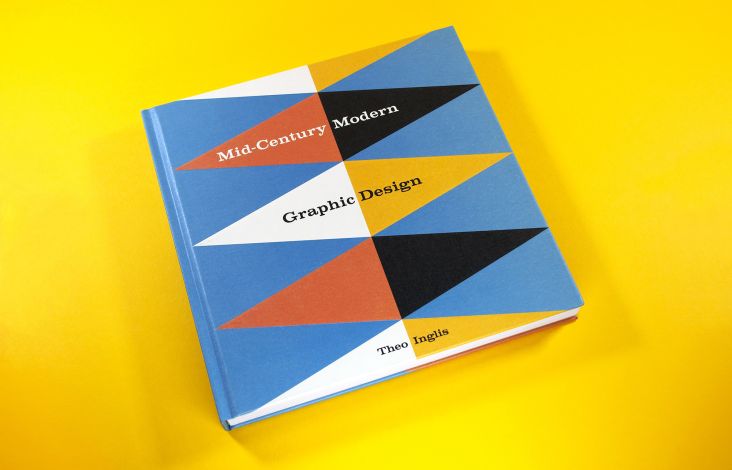](https://www.creativeboom.com/upload/articles/d6/d6a4e3470465b2a0e4e1269d570cd2f3467485a8_1280.jpeg)
Image courtesy of Adobe Stock
Dave Garbe of Cornwall design agency Solve Web Media offers a typical tale from early in his career. “I was putting up 100 posters I designed for an event. As I pasted the last one up in a massive public space, someone pointed out I had misspelt the event’s name emblazoned across the cool design I was so proud of. It was a case of: tear down, go home, reprint and start again.”
Any designer who claims not to have had a similar experience is probably lying. Even if you’re really accomplished at spelling and grammar, and ensure everything is checked by multiple people, at some point in your career, a typo is going to get through.
But that doesn’t mean it’s acceptable. You have only one chance to make a first impression with clients, so spelling and grammar are essential in all areas of work, from emails to finished design work. In this article, I’ll first look at some of the most common mistakes in spelling and grammar that creatives make, then some free tools that are available to help get it right.
According to Sod’s Law, there may well be a typo in this very article. If you spot it, please let us know via Twitter, and you’ll be afforded full rights to ridicule.
1. “Who” or “Whom”
Many people struggle with whether to use "who" or "whom" in a sentence. But the easy shortcut is to replace this word with either "he" or "him", and see which sounds more natural.
If it’s "he", then use "who". If it’s "him", then use "whom". You might need to rearrange the words in the sentence a little, but it gets easy once you’ve done it a few times. For example:
Is it: “Who stole my pen?” or “Whom stole my pen”?
Answer: “He stole my pen” sound natural, but “Him stole my pen” sounds daft. So it’s “Who”.
Is it: “Who should I talk to?” or “Whom should I talk to?”
Answer: “Him should I talk to” (or better still, “I should talk to him”) sounds more natural than “He should I talk to”, or “I should talk to he”. So it’s “Whom”.
2. “They're”, “Their” or “There”
We all learned the difference between “they’re”, “their” and “there” at school. And yet it’s common to see people mix them up in emails, and even worse, in completed publications and design work. Here’s a quick reminder of the difference.
- “They’re” means “they are”. For example, “They’re ready to leave now.”
- “Their” shows that someone or a group of people owns something. For example, “They all took out their credit cards."
- “There” refers to a place or position. For example, “Wait over there for a few minutes, and I’ll be with you as soon as I can.”
3. “Your” or “You're”
Confusing “Your” and “You’re” is another error often made, even by educated people who should know better. Here’s how to know which to use:
- “You’re” means “you are”. For example, “You’re very good at spelling and grammar.”
- “Your” shows that you own something. For example, “Oh, dear, your house seems to be on fire.”
4. “Its” or “It's”
“It’s” and “its” are commonly confused, because we automatically apply the rule that we learned at school of using an apostrophe + S to imply possession.
However, “it” is the one word where an exception is made. If you want to say that “it” owns something, you do NOT use an apostrophe. So:
- “It’s” means “It is”. For example, “It’s a short walk from here to the station”.
- “Its” implies possession. For example, “I love California. I love its great weather, its amazing beaches and its can-do attitude.”
5. “Affect” or “Effect”
“Affect” and “effect” are two verbs that are often used by people interchangeably. But they have very different meanings.
- “Affect” means to influence something. For example, “Spraining my wrist has affected my ability to write.”
- “Effect” means to make something happen, usually in a political or bureaucratic sense. For example, “The new government wants to effect major change in the housing market”.
6. “Literally”
“Literally” means that your words should not be taken as an exaggeration or a metaphor, but they mean what they say.
For example, if you said that Lewis Hamilton was “on fire” during his latest race, people would assume you meant he was performing particularly well. If, however, he’d had an engine failure that led to his car bursting into flames, you might want to qualify that he was “literally on fire”.
Unfortunately, in recent years this word has been widely misunderstood, and nowadays even professional people commonly misuse it.
- People (wrongly) use it to mean its exact opposite. A famous example was Deputy Prime Minister Nick Clegg, who once said: “You see people literally in a different galaxy who are paying extraordinarily low rates of tax.”
- People also use it to mean “very”, or “really”. For example, “I was literally hungover.” This is not the worst offence you can make, but you’ll sound much more intelligent if you just use “very” or “really”.
7. “Less” or “fewer”
Another two words that are commonly misused are “less” and “fewer”.
When you’re talking about things that can be counted, use “fewer”. For example, “fewer pens”, “fewer people”, “fewer companies”.
Only when you are talking about things that can’t be counted should you use “less”. For example, “less time” (but “fewer minutes”), “less work” (but “fewer projects”), less money (but “fewer dollars”).
8. “Amount” or “number”
Deciding between “amount” and “number” is similar to choosing between “less” and “fewer”.
You use the word “amount” to describe something that cannot be counted. For example, “I have a huge amount of work to get through”.
If it can be counted, though, use “number”. For example, “We have a large number of designers at your disposal” (not “We have a large amount of designers at your disposal”).
9. “Between” or “among”
“Between” is a word that should only be used to describe two things. For example, “We need to choose between the red and black versions of the logo.”
If you're describing more than two things, though, you should use “among”. For example, “Among the four of us, we need to come up with some kick-ass concepts” (not “Between the four of us.”)
10. Consistency
Should you write job titles with initial capital letters ("Executive Creative Director"), or all lower case ("executive creative director")? In short, there’s no iron-clad rule here: it varies from company to company, and publication to publication. But the important thing is that you’re consistent.
If you do it one way in the first paragraph, but another way in the second, then it looks like you’ve not been paying attention, and the impact of your words is going to be weaker and less convincing as a result.
Other things you need to make sure are consistent within any piece of work or correspondence are:
- Writing everything consistently in the first person (“I did this”) or third person (“They did this").
- Referring to companies as singular (“Facebook does this”) or plural (“Facebook do this”).
- Using apostrophes after words ending in “s”. For example, do you write “Thomas’s designs” or “Thomas’ designs”?
Useful tools for spelling and grammar
However much you school yourself in the theory and practice of good spelling and grammar, our human brains are not perfect. And so an online service that automates the process of checking your text can be a very handy tool in your arsenal. Here are seven of our favourites, and all are free.
Title Capitalise
Want to make your capitalisation consistent? Just copy and paste your sentence or paragraph into this tool, and it automatically converts it to title case or sentence case at the click of a button.
Grammarly
Compose bold, clear, mistake-free writing with Grammarly’s AI-powered writing assistant. It’s not fool-proof; you’ll still need to check it. But it’s a very good start.
Ginger Grammar Checker
Ginger corrects all types of grammatical mistakes including punctuation, sentence structure and style misused words, subject-verb agreement and contextual spelling.
Hemingway
The app highlights lengthy, complex sentences and common errors. If you see a yellow sentence, shorten or split it. If you see a red highlight, it’s a sign your sentence is so dense and complicated that your readers will get lost trying to follow it.
Language Tool
LanguageTool is an online spell and grammar checker. Just paste your text in the box and click the 'Check Text' button. Problem phrases will be highlighted in colour; click on them for more details on potential errors. A Chrome extension is also available.
Online Correction
Another online tool that finds and highlights spelling errors, as well as many basic grammar and style mistakes, and offers suggestions for improvement. When there are two or more correct options, you are prompted to choose one of them.
English Grammar
Another browser-based tool for checking the accuracy of your writing. Paste in your text and it automatically highlights problems in spelling, grammar and punctuation, and provides alternatives, suggestions and explanations.




 by Tüpokompanii](https://www.creativeboom.com/upload/articles/58/58684538770fb5b428dc1882f7a732f153500153_732.jpg)


 using <a href="https://www.ohnotype.co/fonts/obviously" target="_blank">Obviously</a> by Oh No Type Co., Art Director, Brand & Creative—Spotify](https://www.creativeboom.com/upload/articles/6e/6ed31eddc26fa563f213fc76d6993dab9231ffe4_732.jpg)
















